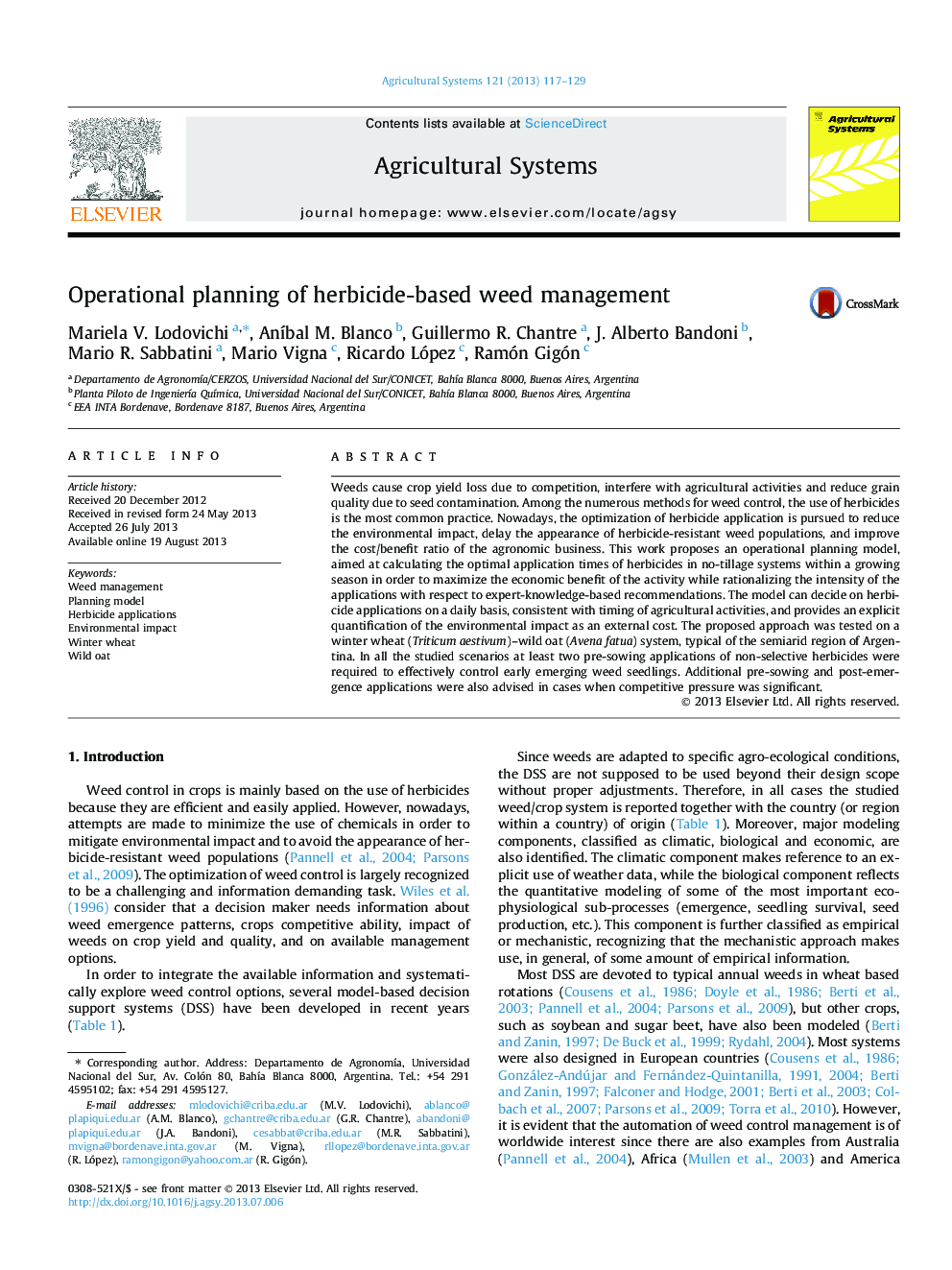| Article ID | Journal | Published Year | Pages | File Type |
|---|---|---|---|---|
| 4491313 | Agricultural Systems | 2013 | 13 Pages |
•A conceptual operational planning model for weed control is proposed.•The model selects herbicides to be applied and determines their application times.•The objective is to maximize the economic benefit.•The environmental impact is quantified as an external cost.•Sensitivity analysis shows that the model solutions are robust.
Weeds cause crop yield loss due to competition, interfere with agricultural activities and reduce grain quality due to seed contamination. Among the numerous methods for weed control, the use of herbicides is the most common practice. Nowadays, the optimization of herbicide application is pursued to reduce the environmental impact, delay the appearance of herbicide-resistant weed populations, and improve the cost/benefit ratio of the agronomic business. This work proposes an operational planning model, aimed at calculating the optimal application times of herbicides in no-tillage systems within a growing season in order to maximize the economic benefit of the activity while rationalizing the intensity of the applications with respect to expert-knowledge-based recommendations. The model can decide on herbicide applications on a daily basis, consistent with timing of agricultural activities, and provides an explicit quantification of the environmental impact as an external cost. The proposed approach was tested on a winter wheat (Triticum aestivum)–wild oat (Avena fatua) system, typical of the semiarid region of Argentina. In all the studied scenarios at least two pre-sowing applications of non-selective herbicides were required to effectively control early emerging weed seedlings. Additional pre-sowing and post-emergence applications were also advised in cases when competitive pressure was significant.
